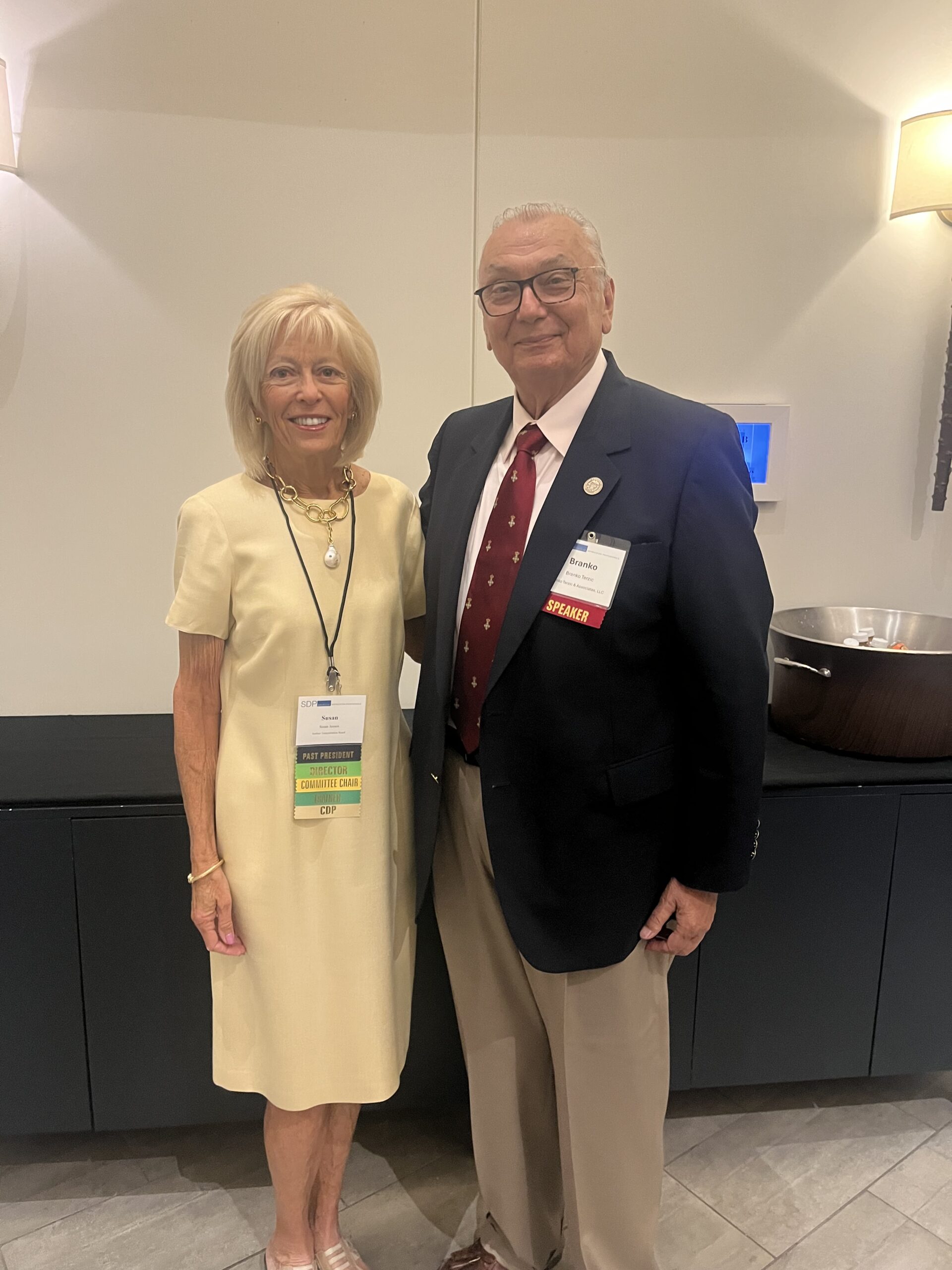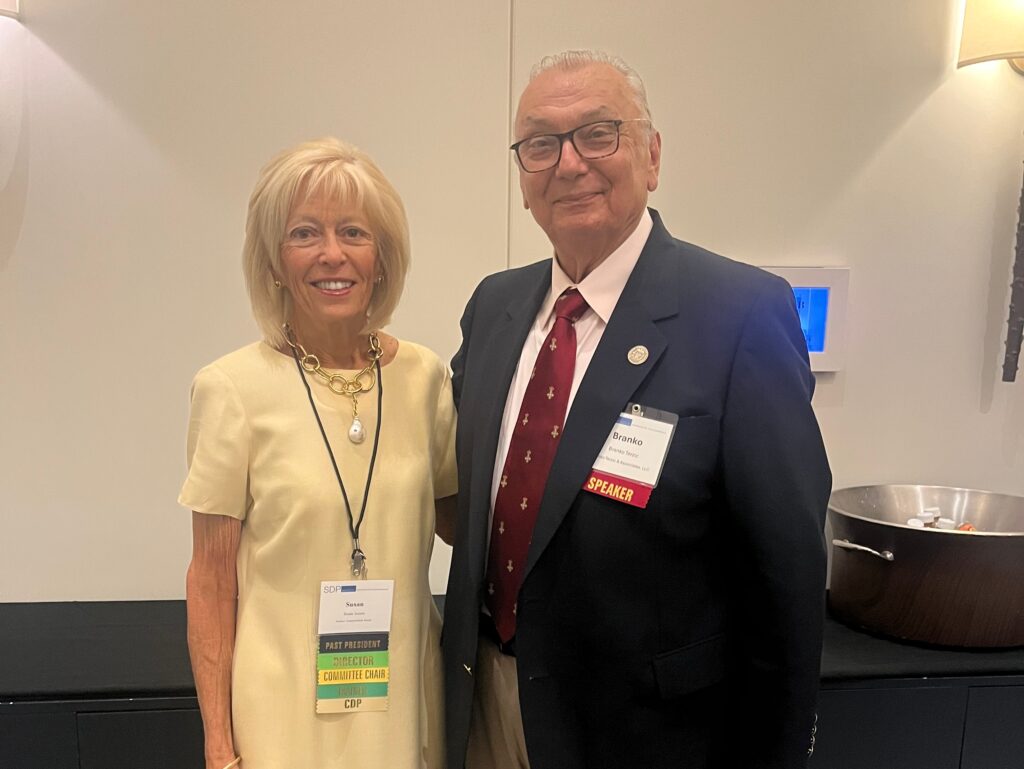
Depreciation Analysis: Unique to Public Utility Regulation
By
Branko Terzic
Depreciation expense is one of the four cost components of a regulated utility’s annual “revenue requirement”. The other components are; operating and maintenance expenses, taxes and return on rate base (investment). Once the revenue requirement has been approved by the regulator rates can be designed to provide an opportunity the to the utility to recover these costs.
Of the four cost categories depreciation is the least discussed and understood. It is however a major cost component.
The Society of Depreciation Professionals (SDP), of which I am one of the founders in 1987, provides training in preparing depreciation analysis and studies. The SDP also provides certification as a Certified Depreciation Professional for those who pass its examinations.
This year’s annual convention was held in Kansas City Missouri on September 15th and 16th. I had the honor of being the first speaker and was asked to discuss “What is meant by getting the depreciation study right?
Based on my experience as a regulator reviewing depreciation studies, as an executive commissioning depreciation studies and as a depreciation consultant I prepared the following list of attributes. The Depreciation Study will be done right if the depreciation analyst has:
- Met early with the client and gained an understanding of the client’s depreciation history in the relevant regulatory jurisdiction
- Reviewed pertinent regulatory orders and policies which may affect future depreciation estimates
- An understanding of the client’s future plans for asset acquisition and retirement
- Reviewed the client’s asset acquisition and retirement accounting practices looking for changes and nonstandard treatments
- Provided the client with a comprehensive data request covering all jurisdictional asset accounts
- Applied SDP trained techniques for life and net salvage analysis of mass plant and individual assets in preparing life and net salvage recommendations
- Understands the technologies of the assets installed in service and of the newly available technologies applicable for each asset account
- Reviewed any recommendations for depreciation rate changes with the client
- Prepared a depreciation report in accordance with SDP training, regulatory requirements and sufficient to persuade other experts of the validity of recommendations
- Been trained in techniques of expert witness to most effectively present and defend the expert depreciation recommendation
One can ask “What happens if we don’t get the depreciation right? Perhaps the life estimate is wrong by overestimating the economic life of the asset.
The outcomes could be
- Stranded investment asset
- Failure to accommodate matching principles where customers who received service from the asset are not charged correctly during the life of the asset
- There is an unnecessary delay in implementing new technologies
- Low depreciation can send wrong price signal
- Stimulates over consumption
State and federal regulators have “got it wrong” in the past when it comes to depreciation. In the 1970’s the switch from analog mechanical switches to digital switching caught both the state public service commissions and the Federal Communications Commission (FCC) off guard. This was especially true for the national American Telephone & Telegraph Company (AT&T) whose subsidiaries covered 75% of the telephone public. AT&T invested heavily in new mini-crossbar switches to replace older crossbar and 1930’s era step-by-step switches. In the late 1970’s and early 1980’s European manufacturers were offering digital switching which allowed customers: call waiting, call forwarding, caller ID, and answering services. The nation’s smaller independent telephone companies, many still with step-by-step equipment, replaced those old technologies with the new digital equipment. Consumers quickly demanded that these services be available nationally. Yes, AT&T’s central offices were functionally obsolete. Yet, regulators were reluctant to recognize the shorter remaining lives with recovery in rates.
Attorney Charles A. Zielinski, former Chairman of the New York Public Service Commission, in an address at Iowa State University’s annual utility conference in 1981 recognized that timely capital recovery was a major new issue for the telephone industry when he remarked:
“And those (regulators) with a broad sense of fairness might also want to see whether the old technology was under-depreciated because of their past refusals to accelerate depreciation: or whether they allowed sufficiently high rates of return to reflect this particular risk they would, in effect, assign to shareholders.”
The introduction of the new telephone technology was clearly a case of “extraordinary obsolescence” This was addressed by the late Professor James Bonbright in his work Principles of Public Utility Rates.
In regulation, the allowances for depreciation both as operating expenses and as deductible reserves are designed to cover functional depreciation including obsolescence and not merely physical deterioration or wear and tear. Hence the allowances must be based on estimates or plausible assumptions as to the effect of obsolescence on useful-life expectancies. But neither a corporate management nor a commission can hope accurately to predict, years in advance of the event, dates as of which old properties may need to be retired for reasons of “extraordinary obsolescence.”
While we, as depreciation analysts, cannot with accuracy “predict” we can recognize the new technologies when they appear. Regulatory practice does allow for the applications of engineering and other judgement in this regard.
The NARUC Committee on Engineering, Depreciation and Valuation handbook was published by NARUC in 1968. No more explicit or stronger statement on the subject of the application of judgment can be found than the statement of the Depreciation Subcommittee that:
“Average service lives – This is the single most important component of the depreciation rate.…The determination of this figure is an engineering function since judgment evaluation of the impact of present and future operating conditions and technological developments on the life of the plant is required in addition to mathematical and statistical analysis of past experience.”
If we are, for whatever reason, going to “get it wrong” when it comes to the estimator of service lives of regulated assets, which direction should we go. Bonbright has some guidance for us on this in Principles of Public Utility rates as well.
“…the danger that an actual-cost rate may be difficult to sustain in the face of falling prices or of technological progress, can be reduced, even though not avoided, by rapid cost-recoupment in the form of liberal allowances for depreciation.” (P. 189)
So, to sum up, the depreciation expert will try to “get it right” and, I believe, they will have a high chance of success if my ten recommendations are applied and Bonbright’s guidance is applied as well.
The Honorable Branko Terzic is a former Commissioner on the U.S. Federal Energy Regulatory Commission and State of Wisconsin Public Service Commission, in addition to energy industry experience was a US Army Reserve Foreign Area Officer ( FAO) for Eastern Europe (1979-1990). He hold a BS Engineering and honorary Doctor of Sciences in Engineering (h.c.) both from the University of Wisconsin- Milwaukee.
#BrankoTerzic #energy #regulations #experience #research #future #opportunity #strategy #management #people #electricity #power #utilities #renewables #RenewableEnergy #energysector #oilandgas #powergeneration #energyindustry #oilandgasindustry #sustainability #legislation

